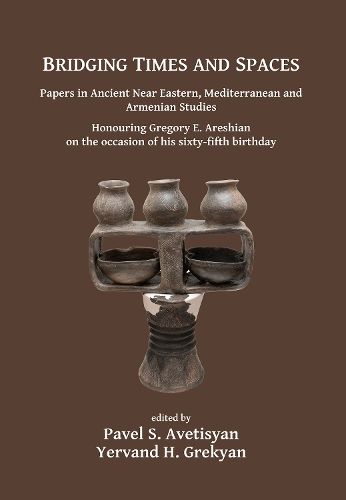Readings Newsletter
Become a Readings Member to make your shopping experience even easier.
Sign in or sign up for free!
You’re not far away from qualifying for FREE standard shipping within Australia
You’ve qualified for FREE standard shipping within Australia
The cart is loading…






Bridging Times and Spaces is composed of papers written by colleagues of Professor Gregory E. Areshian on the occasion his 65th birthday reflecting the breadth and diversity of his scholarly contributions. The range of presented papers covers topics in Near Eastern, Mediterranean and Armenian archaeology, theory of interpretation in archaeology and art history, interdisciplinary history, historical linguistics, art history, and comparative mythology. The volume opens with an extensive interview given by Gregory Areshian, in which Gregory outlines the pathways of his academic career, archaeological discoveries, different intellectual quests, and the organic connections between research questions that he explored across different social sciences and the humanities, stressing the importance of periodizations in interdisciplinary history as well as his views on holism and interdisciplinary studies.
$9.00 standard shipping within Australia
FREE standard shipping within Australia for orders over $100.00
Express & International shipping calculated at checkout
Bridging Times and Spaces is composed of papers written by colleagues of Professor Gregory E. Areshian on the occasion his 65th birthday reflecting the breadth and diversity of his scholarly contributions. The range of presented papers covers topics in Near Eastern, Mediterranean and Armenian archaeology, theory of interpretation in archaeology and art history, interdisciplinary history, historical linguistics, art history, and comparative mythology. The volume opens with an extensive interview given by Gregory Areshian, in which Gregory outlines the pathways of his academic career, archaeological discoveries, different intellectual quests, and the organic connections between research questions that he explored across different social sciences and the humanities, stressing the importance of periodizations in interdisciplinary history as well as his views on holism and interdisciplinary studies.